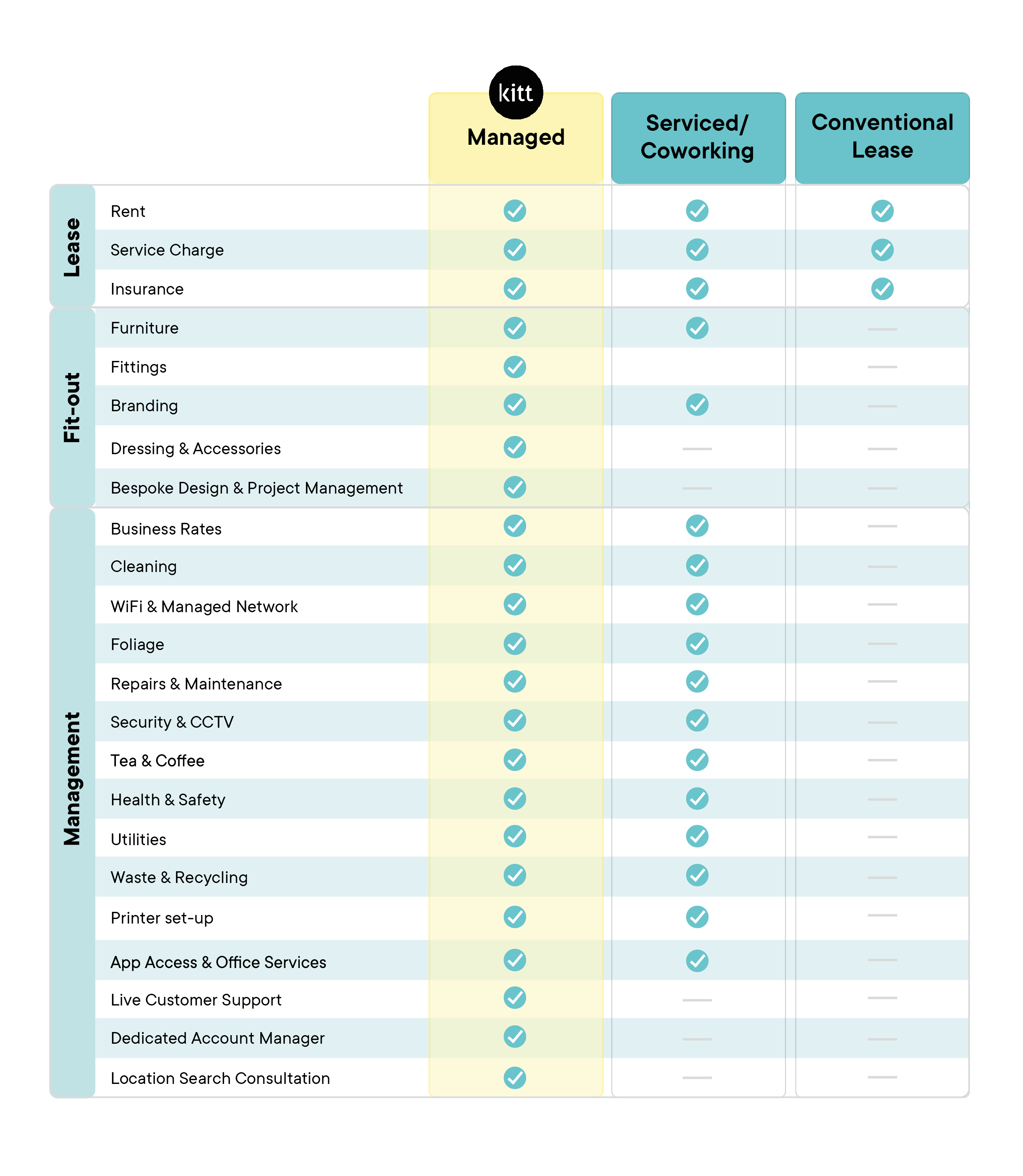A few years ago, the term ‘workspace’ meant exactly that. It was, for all intents and purposes, a space in which people would work. Rows of desks and the promise of water cooler conversations were the reward for crowded commutes and long days.
Now, owing to the shift in working habits and preferences we’ve seen since the pandemic, workspace has taken on a new meaning. The focus is no longer on desk space but people space, where innovation, collaboration and culture can thrive.
As a result of this shift, businesses in the UK and beyond are rethinking what the office of the future looks like for their employees. And for some, that means finding a new space.
There are a number of options leaders can turn to when looking for an office that caters for the changing needs of the workforce, and in more recent times managed spaces have surfaced as a solution.
But what is a managed office, and will it work for every company?
What is a managed office?
A managed office is a bespoke space that can be tailored to the exact specifications of a business. Tenants are given more control over their own workspace, with allowances made for changes to the design and layout.
A managed solution combines the privacy of a conventional lease with the more agile term lengths of a serviced office, and can be tailored to suit any type of business.
Tenants will pay a fixed monthly price to a third party operator, which includes a range of services such as cleaning, kitchen supplies and wi-fi as well as any other pre-agreed add-ons.
What's included in a managed office?
A standard managed office solution covers property fees (rent, service charge and insurance), design and fit-out costs and a full range of support and services to help tenants thrive in their space. Take a look at this blog for a full breakdown of what's included in a managed office.

Does a managed office work for every company?
Managed offices are agile options that can work for a variety of companies. They typically range from 1,000 sq ft to 15,000 sq ft, so tenants might be a scale-up graduating from a co-working or serviced office, or a larger corporation seeking a project team space.
Some examples of when a managed solution might be the right fit for a business:
- Outgrown serviced office space
- Want more privacy and their name on the front door
- Scaling up/down and seeking a more agile lease option
- Need a hassle-free HQ or project team space
- Want office management taken off their hands
What are the benefits of a managed office?
A managed solution simplifies the tenant experience, right from the beginning of the office search journey through to moving in and thriving in a space. That hassle-free process takes the pressure off of businesses and gives them back the time and resources to focus on the things that matter.
As a workspace solution, they offer some of the benefits of both a serviced office and a more traditional lease with flexibility, privacy and scope to design tailor-made space that suit the businesses needs.
Some of the other key benefits include:
- Exclusivity
- Space management
- Low to no upfront costs
- Tech-enabled experience
- Fixed monthly price
What is the difference between a managed office and a serviced office?
There are some key differences to consider when comparing managed and serviced solutions, despite both offering similar flexible working arrangements.
Management does operate in a similar way in both types of spaces, but while serviced offices are shared with other companies and already fitted out, managed solutions are private and bespoke.
On top of this, serviced offices will only operate in fixed locations, whereas a managed solution can be agreed with a private landlord in any given building should the terms work for everyone.
What is the difference between a managed office and a conventional lease?
Both conventional and managed offices are suited to companies seeking their own private space and lease. Although there are similarities in the design capabilities and privacy offered by both, the two provide very different benefits for their tenants.
Managed solutions offer shorter and more agile term lengths, whereas a conventional lease requires businesses to commit to a longer tenancy. There are also differences in cost management, with a larger upfront CAPEX (Capital Expenditure) required in conventional leases.
Obviously the pros and cons of each option can vary depending on a company’s current position and future prospects. Scale, industry and culture play a part, and may influence your decision on a managed space over a conventional lease or vice versa.
How do I search for managed offices?
Finding an office can be tricky. The journey is incredibly fragmented with a number of different stops along the way. The majority of private office spaces will usually be offered only with a traditional lease by default, and you will be expected to deliver your own design, build and ongoing office management for 3-10 years. That's where we come in.
At Kitt, we work with businesses to define what they want to achieve from their space, and support them all the way from finding an office through to thriving in it.
This means that the whole journey is taken care of. From organising viewings to designing and fitting out a bespoke space, everything is covered by us to help make the tenant experience as hassle-free as possible.
If you’re ready to learn more about how a managed office solution could work for your business, get in touch with the team or find out more over on our How Kitt Works page.


